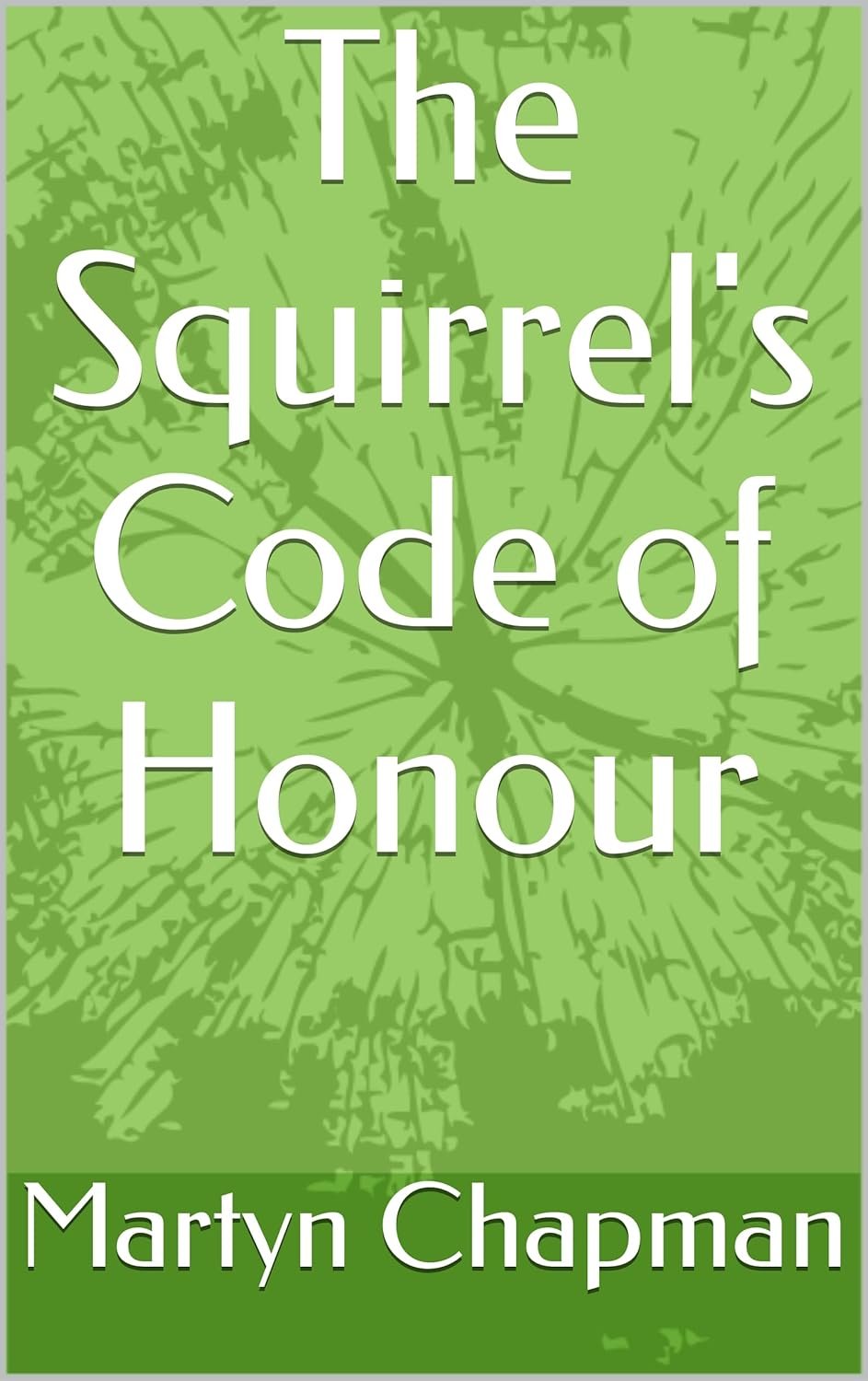Crafting Multi-Layered Characters and Stories
Martyn Chapman shares his creative process, the inspirations behind his novels, the challenges of independent publishing, and his approach to crafting compelling, multi-genre stories rooted in personal experiences and vivid imagination.
Martyn Chapman, a name synonymous with literary versatility and unyielding creativity, stands as a beacon of inspiration in the world of independent publishing. With a career spanning over fifteen years, Chapman has carved a unique niche for himself, crafting stories that traverse genres with effortless grace. From the chilling suspense of The Gatehouse Haunting to the heartwarming charm of Christmas on The Law, his works are a testament to his boundless imagination and his ability to breathe life into characters and settings that linger in the minds of readers long after the final page.
A pioneer of the e-book revolution, Chapman’s journey is one of resilience and passion. His storytelling prowess has given rise to an impressive body of work, including seven novels, a children’s series, short stories, and even stage plays. Each piece is imbued with his signature style—richly layered narratives that draw from his personal travels and experiences, seamlessly blending the real and the imagined. Whether exploring the haunting beauty of Nuremberg or the rugged charm of Scotland’s Berwick Law, Chapman’s stories are as much about the places as they are about the people who inhabit them.
In this interview, Martyn Chapman delves into the inspirations behind his most compelling works, the challenges of crafting multi-dimensional characters, and the freedom—and struggles—of being an independent author. His candid reflections offer a glimpse into the mind of a writer who is, in his own words, “free to meander,” unbound by convention and driven by an unrelenting desire to tell stories that resonate.
“Martyn Chapman is a masterful storyteller whose imaginative, genre-spanning works captivate readers with their depth, originality, and emotional resonance.“
What inspired you to write *The Gatehouse Haunting* and explore its dark, suspenseful themes?
All my books follow a similar pattern ─ the story found me. The framework was laid out in stunning visual form when I stumbled upon an enchanting ancient gatehouse (our holiday rental), guarding an intriguing hamlet in Baden-Württemberg, Germany. Upon climbing the steep, narrow staircase, progress into the gatehouse was choked by a heavy, intimidating old door and my imagination was seized by the ragged metal rim handle and deep lacerations strewn across the wooden slats. Later, after a terrifying vertical climb to the top level, sleep was snatched beneath a warped wooden beam that bore the abrasions of a taut rope. A suicide?
I also discovered old village photographs which teased evidence of a catastrophic storm ─ some of the houses had been washed downstream. Now I began to assemble the characters and put the finer details together, but the book was fully drafted in my head before the flight landed back at Manchester Airport.
In the story, the protagonist (Ella) sketched the gatehouse, and this became the idea for the book cover. On a return visit to the gatehouse, I left a copy of the book. Shameful, I know.
“All my books follow a similar pattern ─ the story found me.” – Martyn Chapman
How do your personal travels and experiences influence the settings and stories in your novels?
Enormously. Berwick Law dominates the charming town of North Berwick, Scotland, and for over thirty years, I had carried the outline of a fictional Christmas story in my head without any idea of where it might be set. Then, whilst walking to the summit of The Law, I realised I had found the perfect location. Christmas on The Law was born. Excited to proceed, I discovered the fascinating history of the town, which I hoped would enhance the story further. Other than the walk, my own experiences had little connection to the characters’ lives, but this was not the case for One Christmas in Nuremberg. A loose real-life version of this story already existed within my family.
Nuremberg offered a dazzling collaboration between the city’s dark traumatic history and the characters’ haunting pasts. And because I do not allow my characters to roam around a venue that I haven’t seen firsthand, I wanted to convey their own curiosity and wonderment but equally tie in their personal stories to the city’s tormented surroundings. Blending a location to a character’s story is like the chicken and the egg scenario ─ which came first? When the characters and their secrets are already rooted in my head, a location brings the two together to create an explosion of subplots. Nuremberg’s magnetism seized a sad family event and developed the story into something far greater and relevant.
“Writing is like sumo wrestling inside the head.” – Martyn Chapman
What challenges did you face while developing Ella’s character and her journey in *The Gatehouse Haunting*?
Multiple challenges, because writing is like sumo wrestling inside the head.
Firstly, I realised that if Ella liked ghosts there couldn’t be a story. I needed her to show fear. But the challenge was to goad the reader into playing detective and question her fragile nature, her vivid imagination, and her quaint, sometimes annoying behaviour. I used her long stay in hospital (sadly common for Crohn’s sufferers) to set the seeds of her mental state. Was her husband a bully who exploited her vulnerability and illness or was he simply exasperated by the nonsense inside Ella’s head?
I introduced Friedrich, the mysterious businessman, because I wanted to pose more questions. Is Ella the sort of woman who is continually attracted to the wrong kind of man? Was Friedrich a malicious plant secretly connected to her cruel husband? Or was he jaded by loneliness and genuinely wanted to help her with the language barrier? To love her?
Ultimately, by surviving the terrifying events at the gatehouse, Ella would prove she was a strong character who could successfully manoeuvre her male suitors and take revenge. But my biggest challenges were whether the reader would like Ella and get behind the story? A hundred book reviews may provide the answer!
How do you balance writing across different genres like humor, suspense, and mystery?
A blunt Yorkshireman might respond, I make nowt of genre and simply go where the story takes me. And this is true for me, because I’m an independent publisher who has no direction from agents, deadlines, or rules to follow. I’m free to meander. If Jack Reacher was a writer! (Lee Child’s gallant creation). Obviously, the downside is the unknowing. A barren wasteland where books are untested. Though possibly deserved, because you can’t assume success.
A single book can traverse across several genres. My first book, Hormones and Crumble, and by far the most controversial ─ a subject barred from dinner parties ─ set out to be a gentle humorous mystery, but the character evolved by secretly visiting dark and deviant places. Of course, I was shocked by this debauched spectacle but carefully wrote it down.
What advice would you give to writers looking to create compelling and multi-layered stories?
Initially, the scenes in my books are played out as short films inside my head and then I describe the pictures. This becomes the draft. Following countless rewrites, comes the painful part ─ financial investment ─ ouch! Share your story with the experts and let the literary surgeons poke oxygen into your creation. My saviours were Cornerstones Literary Consultants.
EDITOR’S CHOICE
Hilarious, whimsical, and endlessly entertaining! The Squirrel’s Code of Honour is a brilliantly crafted, laugh-out-loud adventure for all ages.



